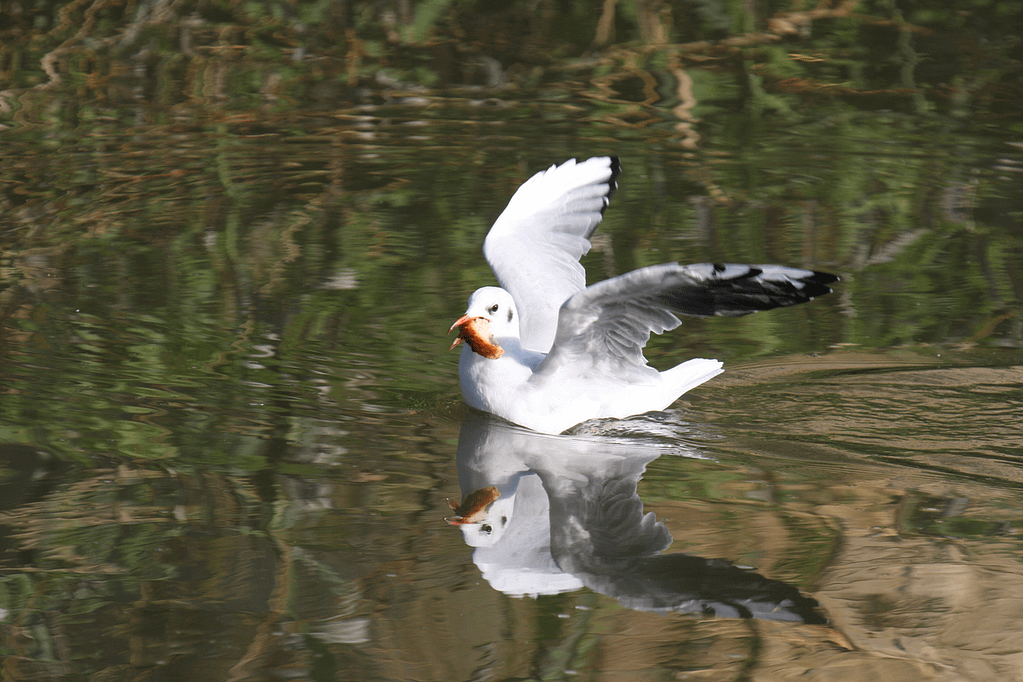Black-headed gull
Explanation
For much of the year, black-headed gulls can be found in the city and, therefore, also within Tapijn. In winter, you can recognise them by their ‘headphones’, the markings they have on their heads. In summer, the adult birds have a chocolate brown to black head. But by then most of the black-headed gulls will already have left for their breeding grounds.
The black-headed gulls that winter in Maastricht leave for Eastern Europe in spring. They breed in swamps in Germany, Poland, and the Czech Republic. We know this, because some black-headed gulls wear a ring around one of their legs. Thanks to these rings, we are know that these urban show-offs lead completely different lives in a completely different environment during breeding season.
Relationship with humans
Why we do what we do
Black-headed gulls prefer to spend the winter in the city, close to people, because that is where the most food can be found. They are real opportunists that are drawn to leftover food thrown away by humans. They can often be found near rubbish bins or wherever ducks are fed. We often see them near the aviary.
Because of their loud screeching, people often find gulls to be annoying, but watching their quarrels about bread crusts or chips can be quite a fascinating spectacle.
Noise they’ll take with them, the black-headed gulls. But also interesting interactions and look at the difference in discoloration of the heads. One gull has a very white head with a “headphone”, while the other (on the far right of the tree trunk) already has a completely black head (breeding plumage).
They continue to chase their victim, for example a kingfisher or a tern, until it drops its prey.
Seagulls screaming for bread
This video was submitted by Mark Franck. What a spectacle when the seagulls scream for bread. Black-headed gulls prefer the city in winter, close to humans, because that’s where they find the most food. They are real opportunists, eager to get rid of discarded human food. Usually they can be found near a garbage can or in a place where the ducklings are fed. In the summer, most black-headed gulls migrate to their breeding grounds in Eastern Europe.



